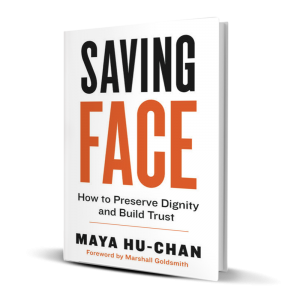Unconscious biases are powerful mental shortcuts. Here are the 4 most common and how to mitigate their damage.
Leaders seeking to create inclusive work environments should start by understanding how unconscious biases can undermine those efforts.
Unconscious biases are mental shortcuts that help us process information quickly. They can be useful when leveraged against objects — a bias against hot stoves protects us from getting burned. But, when they are leveraged against people based on race, ethnicity, gender, sexual orientation, physical abilities, or religion, they cause individual harm and impair Diversity, Equity, and Inclusion (DEI) efforts.
In “Inclusive Behavior: Learning About Bias,” Dr. Ernest Gundling and Dr. Cheryl Williams assert that leaders must understand and address unconscious bias, a process that begins with self-reflection.
“Each of us has to extract ourselves from the box of assumptions that often keeps us walled-in and impervious to the ideas and capabilities of others,” they write.
Here are the four most common types of unconscious bias and how leaders can dismantle those “boxes of assumptions.”
1. Confirmation bias
Our biases reflect deeply held beliefs. Confirmation bias happens when we favor new information that confirms something we already believe.
I recently worked with a leader, Phil, who had merged two teams. One consisted of people he previously led, while the other included people he had never worked with. Although one team, Phil treated them as two – an in-group of those he knew well, and an out-group of strangers. People from both groups said Phil obviously favored the in-group — he sought their input in meetings, moved their ideas forward, and gave them public praise. The out-group felt excluded, while the in-group felt uncomfortable with the obvious favoritism.
This was confirmation bias in action. Phil’s deeply held belief was that his old team was high-performing. So, when confronted with new information — input from both groups — he favored the group he already believed to be better.
Leaders can counteract confirmation bias by seeking information that may disprove existing beliefs. Ask for input from people outside your echo chamber. Look to trusted colleagues for objective assessments of confirmation bias.
2. Insider bias
Before our workplaces became the diverse, multicultural communities of today, our brains developed a bias for the familiar and a distrust for the unfamiliar. This is insider bias.
Phil acted on insider bias by distrusting the contributions of his new team members. People often act on insider bias when they greet with suspicion anyone who is unfamiliar in terms of cultural, racial, ethnic, or other identity markers. Harmful stereotypes are reinforced when these unconscious, nuanced, snap decisions are made.
Leaders can counteract insider bias by widening the in-group. Look for barriers to entry and remove them. Create identity markers shared by all — clothing with corporate logos, events that invite participation regardless of gender, culture, or religion, and celebrations of group achievements.
3. Attribution bias
Research shows that we interpret success and failure differently when experienced by others versus ourselves. When we succeed, we believe our personal characteristics are responsible (“I got this promotion because I’m smart.”) When others succeed, we blame outside circumstances (“They are lucky.”) Similarly when we fail, we blame outside forces (“My business failed because of the economy”), while blaming others’ character defects for their failures (“They have terrible business sense.”)
Attribution bias can lead to false, undeserved assumptions. Is someone late to a meeting because they are disrespectful of others’ time, or did a demanding client hold them back? Keep attribution bias in check by questioning character judgments, particularly of those who might not be perceived as insiders.
4. Overconfidence bias
People tend to be overconfident in their own judgments, even when data may contradict them. For example, a leader seeking to promote a worker may base their decision on an opinion (“Jason is too quiet to be a leader”) rather than data (“Jason is a high-performer who takes time to formulate his thoughts before speaking.”)
Leaders can overcome this bias by assuring confident assertions are based on solid evidence. Widen the pool of evidence by inviting multiple voices into the conversation.
Our brains are wired for efficiency, and biases are efficient — and harmful. Get off the day-to-day autopilot mode that allows for these mental shortcuts to kick in. Slow down, reflect, and examine your beliefs, and invite differing points of view. Open your inner circle, step out of your echo chamber, and break down your “boxes of assumptions.”
 My book, Saving Face: How to Preserve Dignity and Build Trust, illustrates how we can honor face to create positive first impressions, avoid causing others to lose face, and, most importantly, help others save face to build trust and lasting relationships inside and outside the workplace.
My book, Saving Face: How to Preserve Dignity and Build Trust, illustrates how we can honor face to create positive first impressions, avoid causing others to lose face, and, most importantly, help others save face to build trust and lasting relationships inside and outside the workplace.
This article was originally posted on Inc.com

